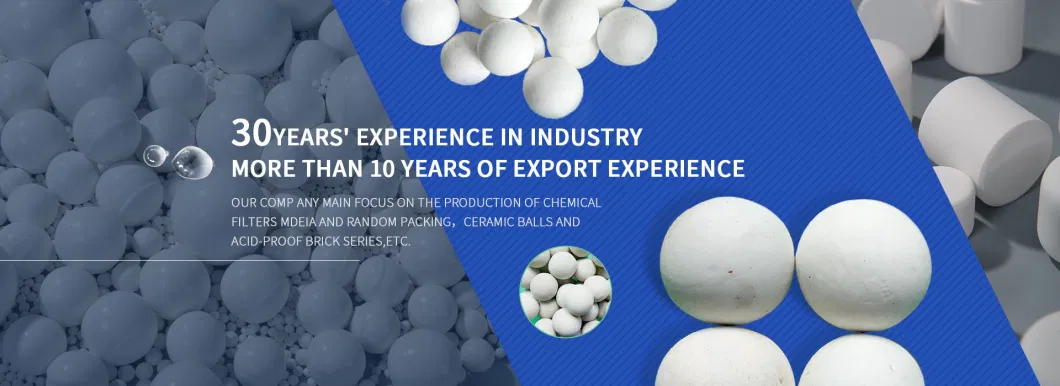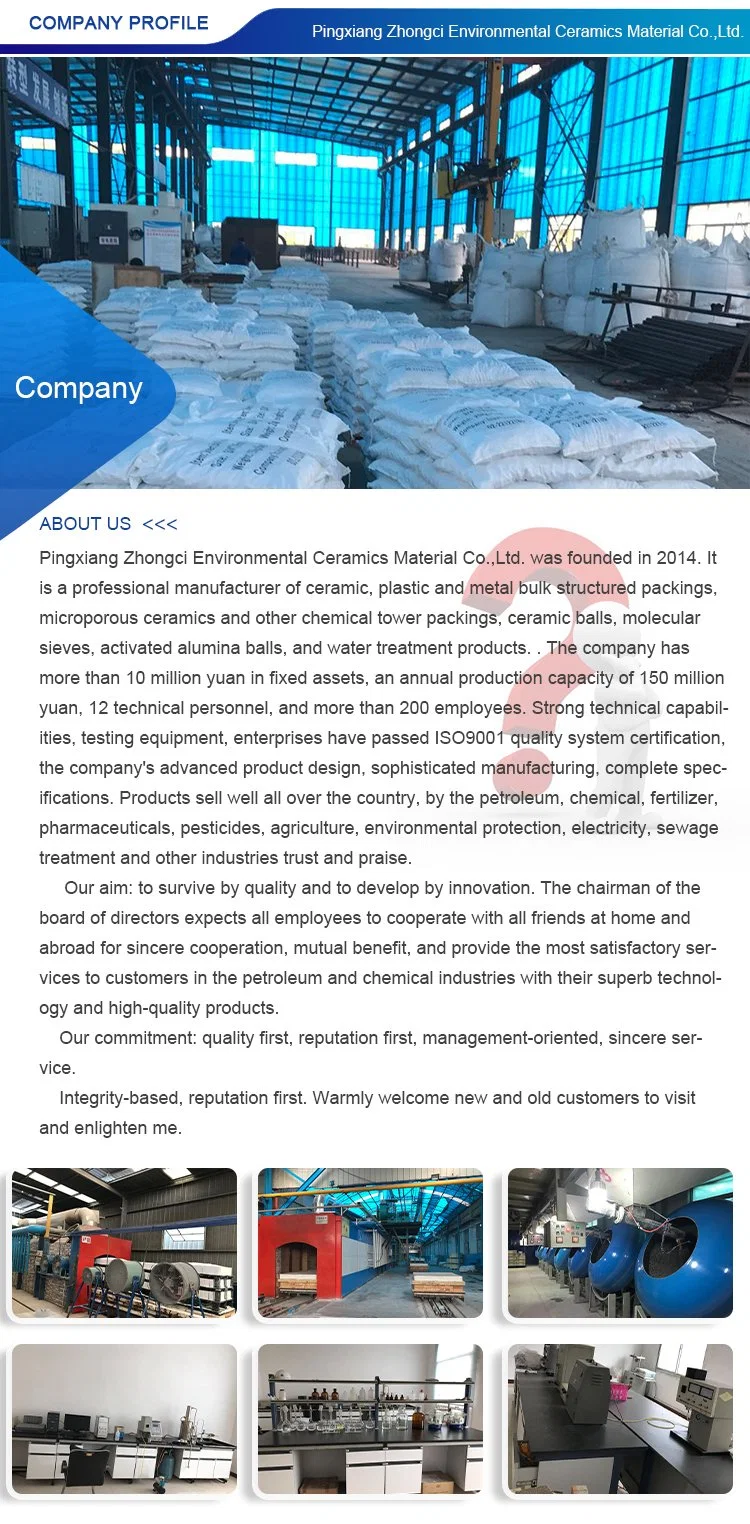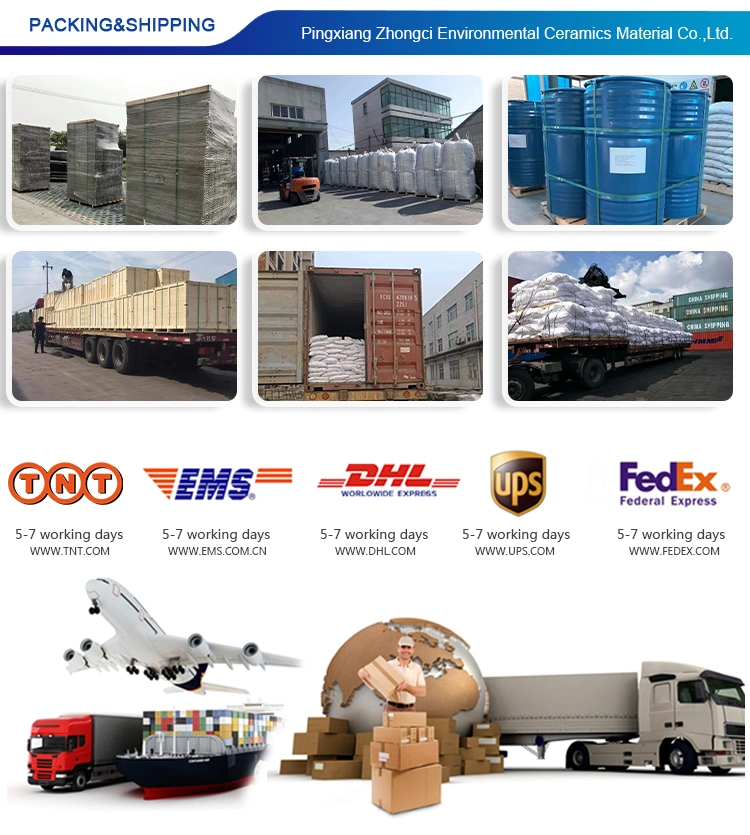
Category

Inert Alumina Ceramic Ball 17% 25% 99% Content for Support Bed in Chemical Tower
INERT CERAMIC BALLS FEATURES • High-performance Catalyst Support Media • Acid, Alkali resistance • High mechanical stren
Basic Info.
| Model NO. | ZC-CB |
| Specification | 6~50mm |
| Trademark | Zhongci |
| Origin | China |
| HS Code | 6909190000 |
| Production Capacity | 100tons/Week |
Product Description

INERT CERAMIC BALLS
FEATURES
• High-performance Catalyst Support Media
• Acid, Alkali resistance
• High mechanical strength
• Available sizes (diameter):
1/8" (3 mm), 1/4" (6 mm), 3/8" (9 mm),
1/2" (13 mm), 3/4" (19 mm), 1" (25 mm),
1 ¼" (32 mm), 1 ½" (38 mm), 2" (50 mm)
Ceramic Balls provides covering or supporting materials of the catalyst in the reactors and the packing in the columns.
17-23% Ceramic Inert Ball Catalyst Bed Support Media Inert Ceramic Alumina Ball
Introduction:Inert ceramic (porcelain) balls are used to fill and support the catalyst layer in catalytic columns and reactors, and as grinding bodies in ball mills.The balls are made of high quality solid pressed silicate porcelain with an aluminum oxide content of Al2O3 -17% (in the range of 17-26%). They have high mechanical strength, resistance to acid, alkali, and some organic solvent, and resistance to thermal shock, which makes them all ideal choice for support of all types of catalysts.Ceramic Balls are available to the order of sizes from 3 mm to 50 mm in diameter. Other types of ceramic products can be made upon your request indicating the necessary technical data. Ceramic ball come up with a few different sizes, which are 1/8", 1/4", 3/8", 1/2", 3/4", 1", 1¼", 1½", 2". The size was arranged layer by layer at the top and bottom of the vessel, with different sizes of ceramic ball. Chemical reaction in a reactor (designations on the diagram):The raw materials flow down from the upper part. The raw materials go through the inert balls, to the catalyst area. The raw materials chemically react at the catalyst area and get chemically engineering. It becomes the secondary raw materials (products).The chemical engineered materials (products) pass through the inert balls and flows to next process.Chemical composition:
| Al2O3+SiO2 | Al2O3 | SiO2 | Fe2O3 | MgO | K2O+Na2O+CaO | Other |
| >92% | 17-23% | 68-73% | <1% | <0.5% | <4% | <0.5% |
| Size | Crush Strength | |||
| KG/Particle | KN/Particle | |||
| 1/8" (3mm) | >35 | >0.35 | ||
| 1/4" (6mm) | >60 | >0.60 | ||
| 3/8" (10mm) | >85 | >0.85 | ||
| 1/2" (13mm) | >185 | >1.85 | ||
| 3/4" (19mm) | >487 | >4.87 | ||
| 1" (25mm) | >850 | >8.5 | ||
| 1-1/2" (38mm) | >1200 | >12 | ||
| 2" (50mm) | >5600 | >56 | ||
| Item | Value | |||
| Water Absorption (%) | <0.5 | |||
| Bulk Density (g/cm3) | 1.35-1.4 | |||
| Specific Gravity (g/cm3) | 2.3-2.4 | |||
| Free Volume (%) | 40 | |||
| Operation Temp. (max) (ºC) | 1100 | |||
| Moh's Hardness | >6.5 | |||
| Acid Resistance (%) | >99.6 | |||
| Alkali Resistance (%) | >85 | |||
| Package Type | Container Load Capacity | Delivery Time | Quality Insurance | Payment Terms | |
| 20 GP | 40 GP | ||||
| Steel Drum | 20-24 tons | * | Within 7 days | China National Standard; Offer quality assurance as request | T/T, L/C, Paypal, West Union |
| Ton Bag | 20-25 tons | * | |||
| Woven Bag | 20-25 tons | * | |||










